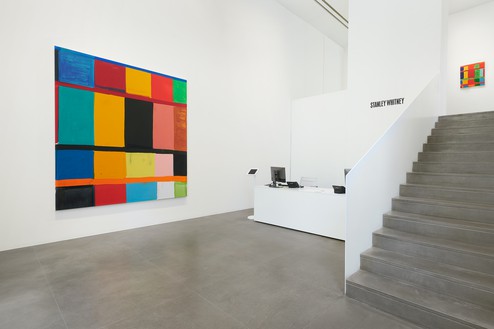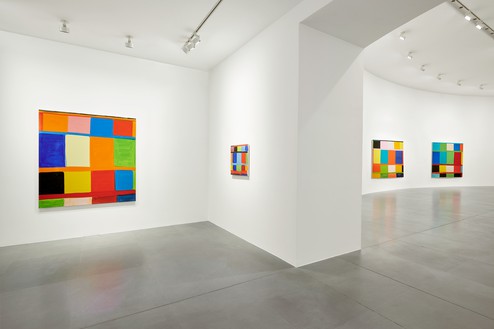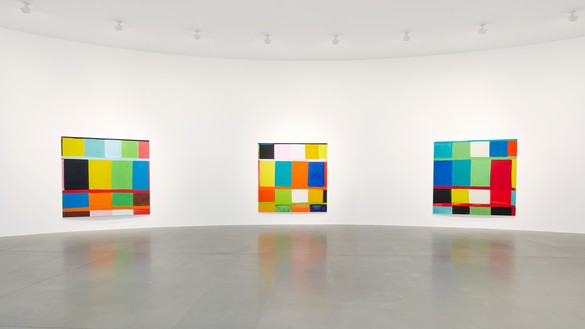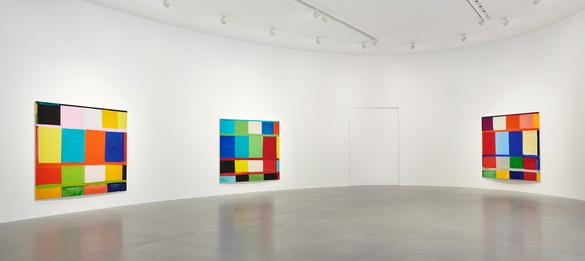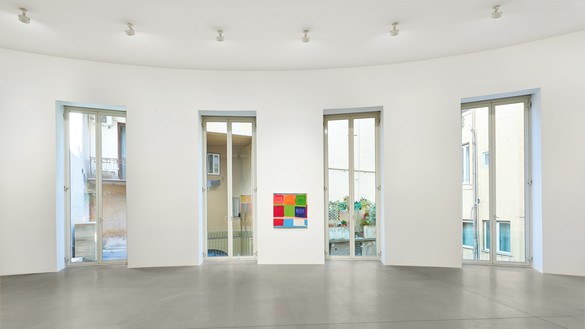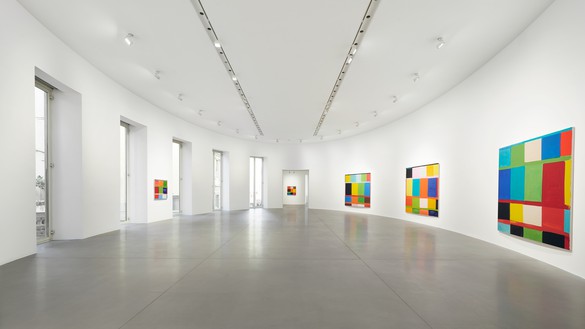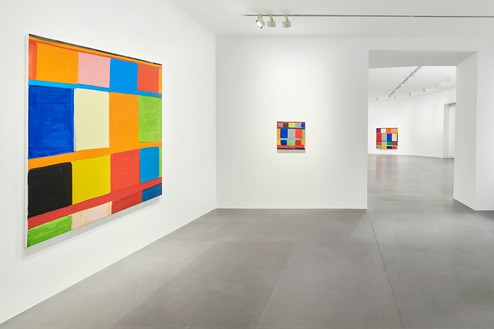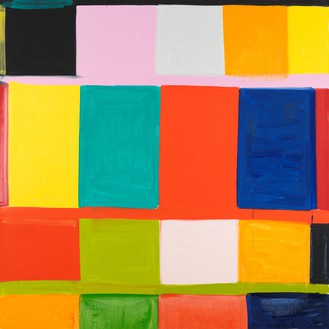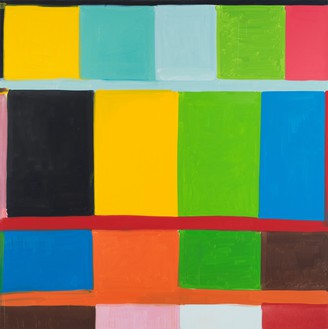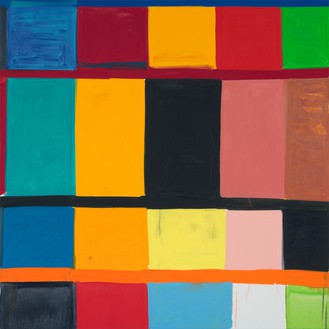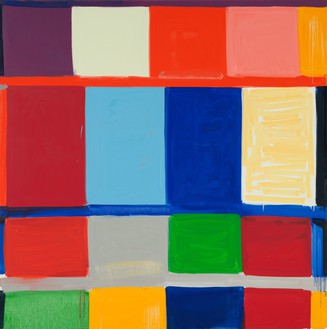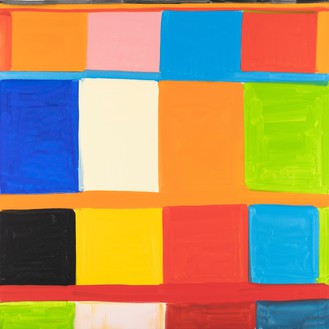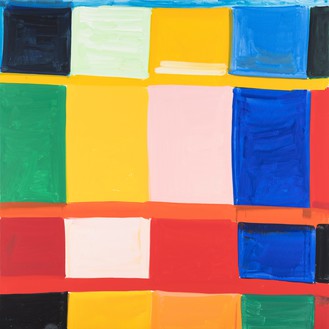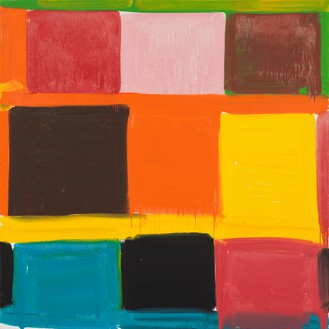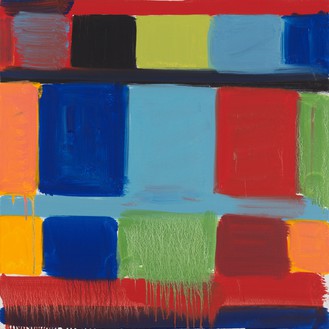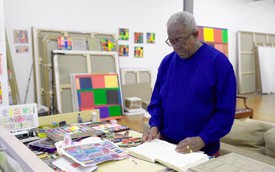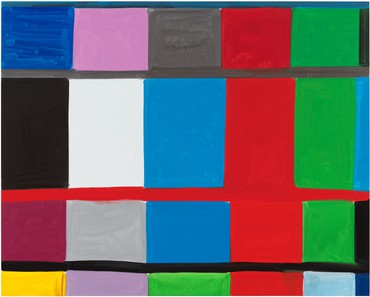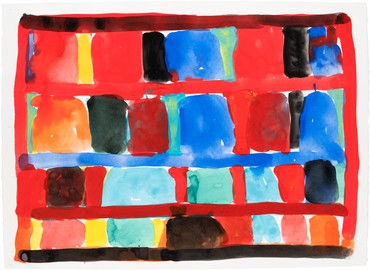About
To celebrate the opening, an evening of poetry and jazz with Elisa Biagini and Go_Dex Quartet will be held from 5pm to 8pm at Fondazione Nicola Del Roscio, via Francesco Crispi 18.
The color, the light, the ancient architecture—I never tire of contemplating Rome. Rome always clarifies and inspires my work. The current form of my painting started to take shape in the nineties when I was absorbed in the city and looking at ancient and Renaissance architecture. In Rome, there is an order, an ancient rhythm, that I want in my paintings.
—Stanley Whitney
Gagosian is pleased to present new paintings by Stanley Whitney. Originally scheduled to open in April, but delayed by the pandemic, this is his first exhibition with the gallery and his first major exhibition in Rome, where he lived for five years during the 1990s. It features paintings produced both in New York and in the artist’s studio near Parma, Italy.
Whitney’s vibrant abstract paintings unlock the linear structure of the grid, imbuing it with new and unexpected cadences of color, rhythm, and space. Deriving inspiration from sources as diverse as Piet Mondrian, free jazz, and American quilt making, Whitney composes with blocks and bars that articulate a chromatic call-and-response within the bounds of each canvas.
In occasione dell’inaugurazione, gli spazi della Fondazione Nicola Del Roscio, via Francesco Crispi 18, ospiteranno tra le 17 e le 20 una performance di poesia e jazz con Elisa Biagini e Go_Dex Quartet.
Il colore, la luce, l’architettura antica – non mi stanco mai di contemplare Roma. Roma da sempre illumina ed ispira il mio lavoro. La mia tecnica pittorica attuale ha iniziato a prendere forma negli anni novanta, quando, immerso nella città, mi guardavo intorno ammirando l’architettura antica e rinascimentale. A Roma vige un ordine e un ritmo antico che voglio nei miei dipinti.
—Stanley Whitney
Gagosian è lieta di presentare una mostra di nuovi dipinti di Stanley Whitney. Originariamente programmata ad aprile, poi posticipata a causa della pandemia, questa è la sua prima mostra con la galleria e la prima significativa esposizione a Roma, città in cui ha vissuto per cinque anni negli anni 90. La mostra presenta opere realizzate a New York e nello studio dell’artista vicino a Parma, Italia.
La vivace astrazione di Whitney interrompe la struttura lineare della griglia, riempiendola di nuove e inaspettate cadenze di colore, ritmo e spazio. Traendo ispirazione da fonti diverse come le opere di Piet Mondrian, il free jazz, e le trapunte americane, Whitney compone le sue tele con blocchi e barre in un dinamico gioco cromatico di “botta e risposta”.
Whitney ha trascorso molti anni sperimentando il potenziale apparentemente illimitato di una singola tecnica compositiva, dividendo liberamente tele quadrate in registri multipli. L’olio applicato sottilmente conserva il suo tocco vivace pur permettendo un certo grado di trasparenza e di tensione ai bordi di ognuno dei brillanti riquadri. Utilizzando tele di varie dimensioni, l’artista esplora gli effetti variabili delle sue geometrie disegnate a mano libera, sia in grande scala che in formato più intimo, mentre applica abilmente successivi blocchi di pittura rispondendo al richiamo di ogni colore.
Sebbene Whitney si sia profondamente dedicato alla sperimentazione cromatica nel corso di tutta la sua carriera, ha consolidato il suo originale approccio durante un viaggio formativo in Italia nel 1992, trasformando le sue composizioni da slegati insiemi di forme amorfe alle più solide e sovrapposte disposizioni che caratterizzano il suo stile maturo. Sono state l’arte romana e l’architettura – incluse le imponenti facciate del Colosseo e di Palazzo Farnese e i ripiani delle urne funerarie esposte al Museo Nazionale Etrusco – ad aver ispirato in Whitney la relazione tra colore e geometria.
L’Italia rimane una fonte di ispirazione fondamentale e duratura per Whitney, che trascorre le sue estati dipingendo in uno studio vicino a Parma. Lavorando in Italia, egli adatta la tavolozza alla storia che lo circonda, permettendo alle tonalità tenui – il beige, i marroni e i rossi Pompeiani – di assumere un ruolo importante nelle sue ricche e varie composizioni.
Questi toni caldi ci appaiono in tutta la loro potenza in Bertacca 3 (2019), una delle grandi tele che Whitney ha dipinto in Italia. In quest’opera l’artista riproduce la tonalità del vermiglio, presente negli affreschi di Boscoreale al Museo Archeologico Nazionale di Napoli, ricreando la stessa tonalità luminosa in strisce dense e in losanghe di pittura, contrapponendola poi direttamente al rosso cardinale, colore che ha invece sviluppato negli Stati Uniti. I contrasti cromatici interculturali creano così un’interazione dinamica tra spazio e massa, permettendo ai ritmi del passato classico di dialogare con il presente.
#StanleyWhitney
Artist

Stanley Whitney: Vibrations of the Day
Stanley Whitney invited professor and musician-biographer John Szwed to his studio on Long Island, New York, as he prepared for an upcoming survey at the Buffalo AKG Art Museum to discuss the resonances between painting and jazz.
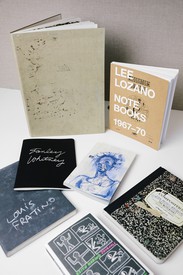
Book Corner
Private Pages Made Public
Megan N. Liberty explores artists’ engagement with notebooks and diaries, thinking through the various meanings that arise when these private ledgers become public.
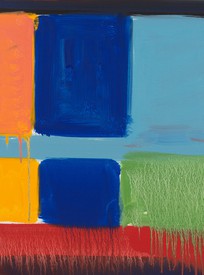
The Space Is in the Color: Stanley Whitney
Stanley Whitney reflects on the evolution of his work with Louise Neri, from his formative early days in New York to the pivotal period he spent living and working in Rome, arriving at the highly distinctive paintings for which he is now known. They explore the diverse and surprising influences of art and music on Whitney’s oeuvre, as well as his process and practice.
Stanley Whitney: Rhythm and Vision
While preparing his first exhibition with Gagosian, in Rome, Stanley Whitney speaks with Louise Neri in his New York studio about how he arrived at his unique and intuitive approach to color and space in painting, employing a dynamic fusion of preordained structure and improvisation.
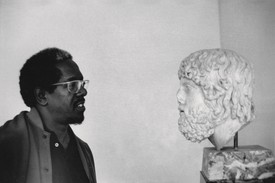
Stanley Whitney: The Ruins
For American painter Stanley Whitney, Italy remains a central and enduring source of inspiration. Matthew Jeffrey Abrams, the author of a new monograph on the artist, reflects on the profound and far-reaching influence of Italian art and architecture on Whitney’s art.
News
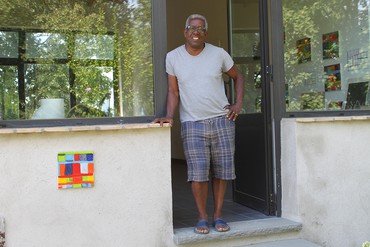
In Conversation
Stanley Whitney
Matthew Jeffrey Abrams
Thursday, October 15, 2020, 2pm EDT
In the context of Stanley Whitney’s exhibition of recent paintings at Gagosian, Rome, which closes on October 17, Whitney and author Matthew Jeffrey Abrams will discuss Abram’s new monograph on the artist and the diverse formative influences on the artist’s imagination. To join, register at zoom.us.
Stanley Whitney at his studio near Parma, Italy, 2012. Photo: Marina Adams, courtesy the artist
